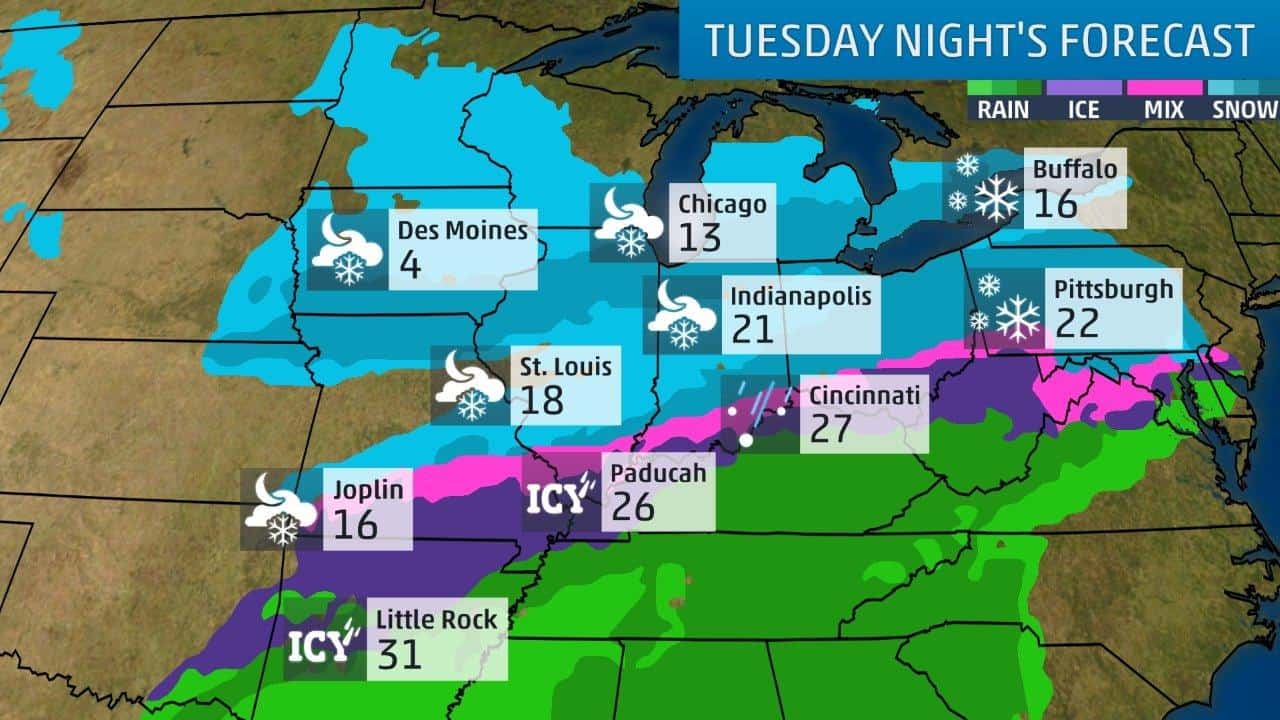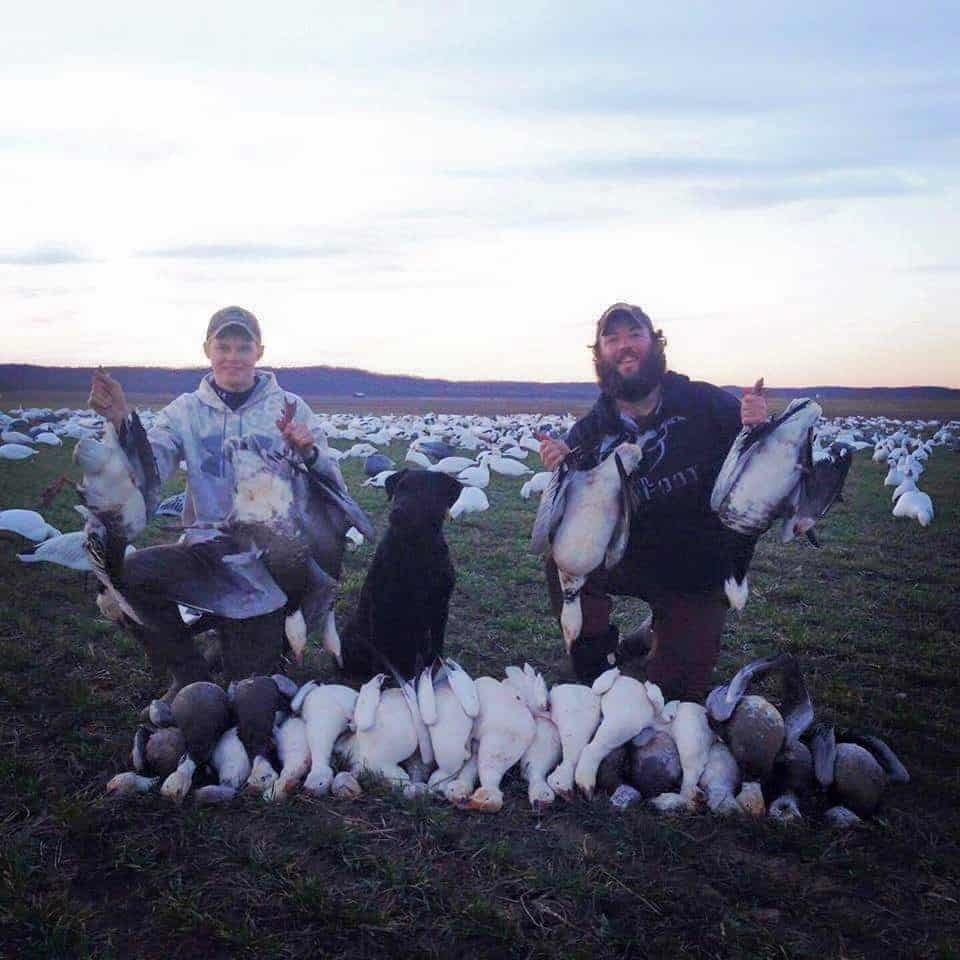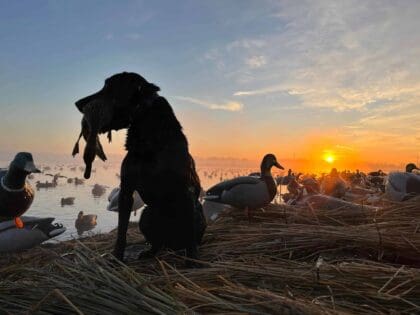A Cold Start to Spring Snow Goose Season!
Once again Punxsutawney Phil has gazed upon his own shadow and cursed us with 6 more weeks of winter. And in the Midwest, it is evident that this is very true. The extended forecast shows a wintery mixture of snow, ice and cold, cold, cold! All this of course…Is not what a snow goose hunter wants to hear…Or is it? The real answer lies with where the hunter is located on the flyway. Colder weather into January might make the snow goose hunter located, say, in Arkansas a very happy person as the geese are less willing to make their migration north. The hunter up north in the cold, if reflective enough, might realize that their season will be extended longer than usual with late migrating geese. Will this turn into a good thing or bad? Depending on the numbers of birds and their location, this could set up a mass migration that sends a big number of adults north…all at once. Knowing my luck it will happen when I am the furthest from the snow goose pit. This scenario, combining the birds and the weather at any moment, will keep everyone guessing enough to drive anyone crazy. However, it’s this insatiable drive that keeps the snow goose hunter going all season long.
Snow geese come in a few different shapes and sizes. This is to say, they have sub species and different plumage morphing phases. The sub species are considered to be the “Greater” and the “Lesser”. The “Greater” is normally found on the eastern shore of North America and rarely shows the “Blue” phase of plumage. This phase is more common in the “lesser” sub species. This coloring was once thought to be a different species of goose, but was later discovered it was just a genetic change in the same family of geese. A single change in one gene alone, will determine if the snow goose is a “white” phase or “blue” phase bird. Here in the Mississippi flyway we see a range of both “white” and “blue” geese. The head of their migration is usually dominated by adult geese that will brave the harsher weather. They can be spotted by their distinct coloring, whether it be pure white, or the commonly nicknamed “eagle head” blues. The adult blue is called this because of its distinct white head compared to its darker bluish body. The juvenile geese will range in color from dish water to a darker grey and mostly bring up the rear of a spring time northward migration. During this migration, if the geese are met by colder weather and snow, these geese will head back south to better conditions.

In this time of year, it is not uncommon for a warm front to kick off the snow goose migration, only to be halted by a lingering winter storm. At this point, the majority of the flock that has already started north will make a decision. Do we continue north out of instinct? Or head back south out of comfort? The answer to these questions will usually determine how your season will start off. There have already been record numbers of birds traveling the south central part of Illinois despite recent colder weather. Access to food and flocks consisting of mostly weathered adults hasn’t stopped them from pushing on. However the snow that is forecasted in the next couple of weeks might push some back south if that access to food is lost. Meanwhile, in the boot heel of Missouri and down through Arkansas, record numbers of snows and blues have been staging for their migration, unhindered by winter weather and joined by some geese returning from the north. If this concentration of birds catches a warm front of considerable size, be on the lookout for a mass migration towards the end of February. As soon as the snow melts, a good number of geese, already behind schedule, might try to make up for lost time by traveling farther than before. A sight to be seen…if you’re lucky enough to be there! The best scenario would be a gradual warm up that brings pockets of adult birds first, followed by the later migration of “juvy” geese. This makes for quality hunting strung out through the length of the season.

The “what if’s” of hunting snow geese may drive some hunters crazy but also give hope to others that look upon the changes of weather with an optimistic view of what’s yet to come this spring. Here at Heartland Lodge we are ready and eager for this year’s season! Good luck to you and your group this spring and if you see snow goose shadows there’s a good chance the 2018 Snow Goose migration has begun!
Tim Fanning
Wing-shooting Manager
Last Updated: February 6th, 2018





How does one prepare for a snow goose hunt on March 1 rst 2018 in your area? As a goose hunter from Northern Michigan hunting can be blue bird day or blowing snow seems you never know. Does it look like a rainy cold spring or somewhat warm?
Thanks Dave
Dave,things are finally starting to warm up, but with that south wind is a lot of rain. Which I dont totally dislike, I am hoping this warm weather and rain lets my winter wheat take off. I think it looks great in the snow spread, however this colder weather has stunted its growth. I think the first week of march will be a great time for migrating geese. Looking to be warmer. Thanks!